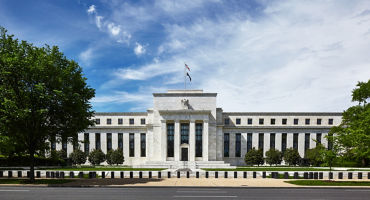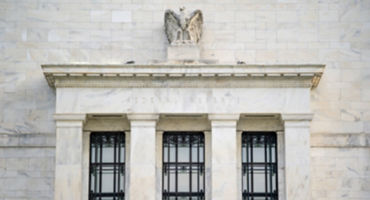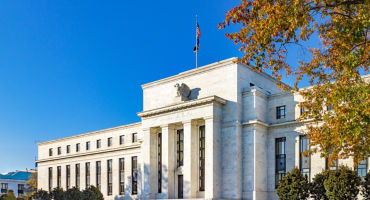- Macro Strategist
Skip to main content
- Funds
- Insights
- Capabilities
- About Us
- My Account
Our Funds
Fund Documents
Global Multi-Strategy Fund
The views expressed are those of the author at the time of writing. Other teams may hold different views and make different investment decisions. The value of your investment may become worth more or less than at the time of original investment. While any third-party data used is considered reliable, its accuracy is not guaranteed. For professional, institutional, or accredited investors only.
Inflation is the top concern of policymakers around the world as consumers and companies struggle with the effects of soaring input costs and severe supply disruptions. Supply-chain bottlenecks have become a mainstream topic and hopes for “normalization” have repeatedly been put on pause since the COVID outbreak. In this note, I consider the cyclical outlook (the next 6 – 12 months) as well as the enduring economic shifts that could result from these disruptions.
In the second half of this year, I expect to see inflation, which is extremely elevated, begin to decelerate — and a key component of that change will be reduced supply-chain pressures. From a goods-economy standpoint, slowing consumption and growing production imply that inventories are being built again, and in response, steep price increases should adjust to more modest levels. In the service economy, on the other hand, spending is likely to rise this year and, given the tight labor market, inflation may be stickier. As I discuss here, all of this has implications for consumers, a range of industries, and the Federal Reserve (Fed). It also raises the question of how companies and governments are addressing the issue of building resiliency in supply chains for the medium term. These efforts may ultimately prove to be an antidote for anemic global growth.
The unusual environment in 2021 was a byproduct of significant fiscal and monetary stimulus, but also a misalignment in the goods and services economy because of COVID. People had money in their pockets, thanks to policy support, but they couldn’t spend it on travel, recreation, and other services. Instead, they spent it on goods. That created a surge in goods demand just as factories in Asia and elsewhere were struggling to respond with more supply, as a result of stringent COVID policies, rising infection rates, and other factors. The end result was supply-chain bottlenecks, which have contributed to the fear among many today that there is no end in sight for high inflation.
But there are a number of signs that conditions are improving, including a sharp decline in the Supply-Chain Bottleneck Indicator, a metric I developed to gauge price pressures as companies were struggling with backlogs and input costs (Figure 1). In addition, consumption of goods is likely to decelerate from its torrid pace as consumer priorities shift toward consumption of services that were previously not available. Rising interest rates, which tend to hurt durable goods spending disproportionately, will further the demand adjustment and supply will rebalance as a result. I expect this will begin to show up in inventory-to-sales ratios. Already there has been some improvement in areas like general department stores, with inventories rising to “above normal.”
Meanwhile, freight costs have seemingly topped out and the relentless backup of ships in US harbors seems to have peaked, though it remains elevated. The pace of US import growth has also slowed, suggesting that a catchup will occur, especially if goods demand continues to dip. If more product is unloaded in areas where demand has cooled, it is likely that discounting will occur and price gains will not only slow but will, in some cases, decline in order to clear inventory.
Among the areas most affected by supply-chain bottlenecks was the automotive industry, which single-handedly added 200 basis points (bps) to the CPI in 2021. Encouragingly, auto production has been rising since the fourth quarter of last year, although progress has been spotty given shortages in the chip industry as well as the impact of the Russia/Ukraine conflict on the availability of certain parts. Inventories are still below average in the US, but I think we’re seeing things begin to turn. This is feeding into used car prices and leases, where price gains are slowing sharply. Ultimately, auto industry experts believe normalcy will return in 2023, but we will be left with a stark illustration of the complexity of supply chains and the potential for disruptions to hamstring production.
As noted, I expect that inflation will be more persistent in the service economy in the near term. Take the housing market, for example. Shelter is the single biggest component of the Consumer Price Index (CPI) and has a fairly large weighting in the Fed’s preferred Personal Consumption Expenditures (PCE) core measure of inflation. Past increases in rent and prices mean this component will rise through much of 2022.
The good news is that there are more new homes and apartments under construction than at any time in the last 45 years (Figure 2) and we are approaching a point where that should mean rising home completion rates. In addition, the Fed’s rate hikes are having the intended direct impact on housing demand, with sales declining meaningfully as rising rates deter buyers. With demand cooling and supply improving, I expect house price gains to slow this year and rent gains to stabilize and eventually slow, though likely not until 2023.
As for the inflationary impact of the tight US labor market, there are some reasons for hope. Last year, I estimated that five million “missing workers” could reenter the labor market as the economy reopened. As of June 2022, we were only about a half million jobs below the pre-pandemic peak. There have been recent signs that some older workers are returning as the pandemic recedes, and there is room for some improvement among immigrants, mothers with young children, and workers who hold multiple jobs.
Continued employment gains in childcare and nursing care, which remain well below pre-COVID employment levels, could help bring more workers back. It’s also notable that demand for temporary work visas is two to three times normal. A decision by Congress to allocate these visas in a timely fashion could make a meaningful difference, as could new STEM student visas proposed by the Biden administration.
I think this backdrop leads to several key takeaways:
I think the challenges we’ve seen during the pandemic, which were exacerbated by the Russia/Ukraine conflict, will drive the US, as well as other countries, to build more resilience into supply chains. To date, there has been a “just in time” approach, with goods ordered only as needed, to achieve cost efficiency. But over the past two years, we saw this approach falter.
Consequently, I think we’re witnessing a shift to a “just in case” approach, including a willingness to carry more inventory and to diversify supply chains with regional hubs. We could also see countries take a more strategic approach to supply-chain management — as in the case of the semiconductor issue, where we see US policymakers thinking about ways to boost US manufacturing capacity. “Critical supplies” onshoring is possible in strategic areas such as health care and smart technologies, for national security purposes. Rising geopolitical tensions, including Middle East tensions, have also raised the stakes for companies in terms of their geographical footprint and ability to ensure the security of critical inputs. “Friend-shoring” of new facilities is another area for companies to consider. It is imperative that government policy focus on issues such as port congestion and the availability of “last mile” transportation to complement the work being done by corporations.
On the labor market front, overreliance on cheap labor in China or Asia more broadly is likely being reconsidered. Companies are also seeking new ways to scale production, looking for alternative sources of labor, and focusing more on the human element of the decisions they make.
Several other factors indicate that corporate supply chains will continue to evolve. The focus on sustainable investments is forcing a rethink of physical risk related to water shortages, hurricanes, and other factors, suggesting a drive for more geographic diversification. In addition, the accelerated move toward automation is changing the types of inputs companies will have to source from their suppliers for future production. Both of these factors add to the need for companies to reevaluate suppliers, understand all the links in a vertically integrated process (instead of relying on outsourcing of operations to suppliers), and consider regional hubs of production as well as diversification of inputs.
Critically, the Russia/Ukraine conflict put the spotlight on the need to plan for energy and food security. This is especially true in Europe, which has been hardest hit by the crisis, but is evident in other countries as well. The coming decade could well see the unleashing of a capital expenditure cycle led by government spending in these areas of strategic importance. This could be an enduring shift that lifts nominal growth in many parts of the global economy where it has been weak for a long time. This, in turn, would imply somewhat higher interest rates over time.
I believe the macro impact of supply-chain reorganization will last for many years, creating uncertainty and a variety of winners and losers at the country and company level. For example, I think the potential winners could include:
On the other hand, the potential losers are likely to include:
In aggregate, profitability could be negatively impacted with companies needing to find alternative sources of efficiency gains rather than relying on previously cheap input costs. While cyclical pressures should bring goods prices and aggregate inflation lower in coming months, it is worth considering whether a shifting geopolitical landscape means the end of the deflationary forces that prevailed for a prolonged period before the pandemic.
Finally, the repeating nature of these disruptions will bring forth government intervention. Active government policies on climate change, energy and food security, health management, national security, transport, and labor force development are likely to be themes that resonate over the coming decade.

Japan's reflation story: An overlooked equity opportunity?
Continue readingCommercial real estate debt: Transitional assets deep dive
Continue readingTwilight zone: how to interpret today’s uncertain macro picture
Continue readingURL References
Related Insights
Stay up to date with the latest market insights and our point of view.

Are hedge funds the missing ingredient?
Inflation, volatility, and valuations — they all raise questions about portfolio diversification and resilience. Multi-Asset Strategists Nanette Abuhoff Jacobson and Adam Berger explain why multi-strategy and equity long/short hedge funds could provide the answers. They offer insights on adding allocations to a traditional portfolio mix and a recipe for manager selection.

Japan's reflation story: An overlooked equity opportunity?
Macro Strategist Nick Wylenzek analyzes the structural shifts in Japan's economy and identifies potential equity opportunities.

Commercial real estate debt: Transitional assets deep dive
Our private commercial real estate debt experts explore transitional CRE assets, highlighting their key characteristics, how they differ from other parts of the CRE debt universe, their potential roles in a portfolio, and much more.

FOMC: Cushioning the US labor market
Fixed Income Portfolio Manager Jeremy Forster analyzes the Fed's decision to cut interest rates at the September FOMC meeting.

Is it time to prepare for stagflation?
Discover why concerns about stagflation are rising, and how asset allocators may be able to hedge the effects on their portfolio.

Twilight zone: how to interpret today’s uncertain macro picture
Macro Strategist John Butler and Investment Director Marco Giordano explore how to interpret today’s uncertain macroeconomic picture and its key implications.

Rethinking the Fed’s dual mandate
Is it time for a fresh perspective on the dual mandate? Fixed Income Portfolio Manager Brij Khurana explores the potential benefits of reorienting monetary policy toward maximizing productivity.

Stagflation watch: Thoughts on tariffs, inflation, and Fed policy
US Macro Strategist Juhi Dhawan considers signs the US economy may be moving toward a toxic mix of slowing growth and rising inflation, creating challenges for the Fed and investors.

One Big Beautiful Bill: Why it’s “buy now, pay later” for markets
Multi-Asset Strategist Nanette Abuhoff Jacobson weighs the near-term benefits of the recently enacted US tax and spending bill against the longer-term costs, and suggests several investment implications.

The power of positive and pragmatic thinking
While markets have a lot to worry about, from government policy to geopolitics, Global Investment and Multi-Asset Strategist Nanette Abuhoff Jacobson looks at the world from another angle: What could go right? She offers five reasons for positive thinking and considers the investment implications.

FOMC: Patiently waiting to ease
Jeremy Forster discusses the Fed's steady policy rates, inflation forecasts, and potential interest rate cuts amidst economic uncertainties.
URL References
Related Insights